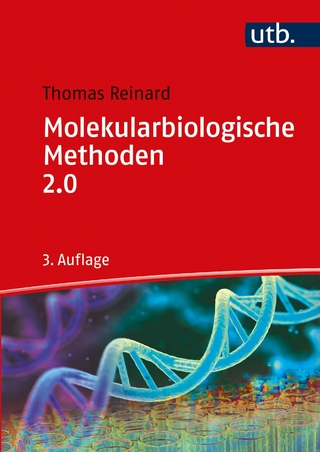
Atlas of Human Pluripotent Stem Cells in Culture
Springer-Verlag New York Inc.
978-1-4899-7839-4 (ISBN)
Dr. Lyn Healy started her training at the Paterson Institute for Cancer Research in Manchester, England, in the experimental hematology laboratory of Dr. T. M. Dexter, where she obtained her master’s degree. From there, she moved to London’s Institute of Cancer Research, where she worked in the Leukemia Research Fund Centre and obtained her Ph.D from the University of London on stem cells in normal and leukemogenic hemopoiesis. She joined the United Kingdom Stem Cell Bank (UKSCB) at the National Institute for Biological Standards and Control as the Senior Stem Cell Biologist. Dr. Healy runs the research and development program at the UKSCB and plays an active role in training scientists in pluripotent stem cell culture. She has collaborated on training courses hosted by the Centre for Stem Cell Biology in Sheffield and has run courses at the UKSCB. In addition, she set up the UKSCB Technical Forum where scientists discuss and resolve practical challenges in the field of stemcell culture. Dr. Healy has published more than forty peer-reviewed papers on stem cell biology. Ludmila Ruban obtained her MSc in physiology at the University of Kiev, Ukraine. She began work on human embryonic stem cells (hESC) in Peter Andrews’ and Harry Moore’s laboratory in Sheffield University, which later became the Centre for Stem Cell Biology. This group was one of the first in the United Kingdom and Europe to start working with the Wisconsin human embryonic stem cell lines. The Centre has been awarded one of the first two licenses granted by the U.K. Human Fertilisation and Embryology Authority for derivation of hESC, and she has helped derive several new stem cell lines. She was also actively involved in the training of national and international researchers within the Centre and coordinated, organized, and taught at the Centre's annual practical training course for academics, “Working with Human Embryonic Stem Cells." She joined the Department of Biochemical Engineering at University College London, and her research interests lie primarily in the area of human embryonic stem cells, specifically optimization of tissue culture conditions for stem cell lines. She also has an interest in stem cell bioprocessing.
1 Before We Begin: An Introduction to the Culture of Pluripotent Cells.- 2 Mouse and Human Fibroblasts.- 3 Inactivated Mouse and Human Fibroblasts.- 4 Human Embryonic Stem Cells.- 5 Human Induced Pluripotent Stem Cells on Feeders.- 6 Pluripotent Cell Lines Grown on Different Substrates and Surfaces.- 7 Passaging Pluripotent Stem Cells.- 8 Characteristic Staining Patterns of Undifferentiated and Differentiated Pluripotent Stem Cells.- 9 Derivation of Induced Pluripotent Stem Cells.- 10 Culture Adaptation and Abnormal Cultures.- 11 Infection.- 12 Miscellaneous Cell Types and Cell Lines of Interest.
| Erscheinungsdatum | 23.09.2022 |
|---|---|
| Zusatzinfo | 279 Illustrations, color; 6 Illustrations, black and white; XV, 206 p. 285 illus., 279 illus. in color. |
| Verlagsort | New York |
| Sprache | englisch |
| Maße | 210 x 279 mm |
| Themenwelt | Naturwissenschaften ► Biologie ► Genetik / Molekularbiologie |
| Naturwissenschaften ► Biologie ► Zellbiologie | |
| Technik ► Umwelttechnik / Biotechnologie | |
| Schlagworte | embryonic fibroblasts • feeder cells • HESC • iESC • mouse embryonic |
| ISBN-10 | 1-4899-7839-9 / 1489978399 |
| ISBN-13 | 978-1-4899-7839-4 / 9781489978394 |
| Zustand | Neuware |
| Haben Sie eine Frage zum Produkt? |
aus dem Bereich


